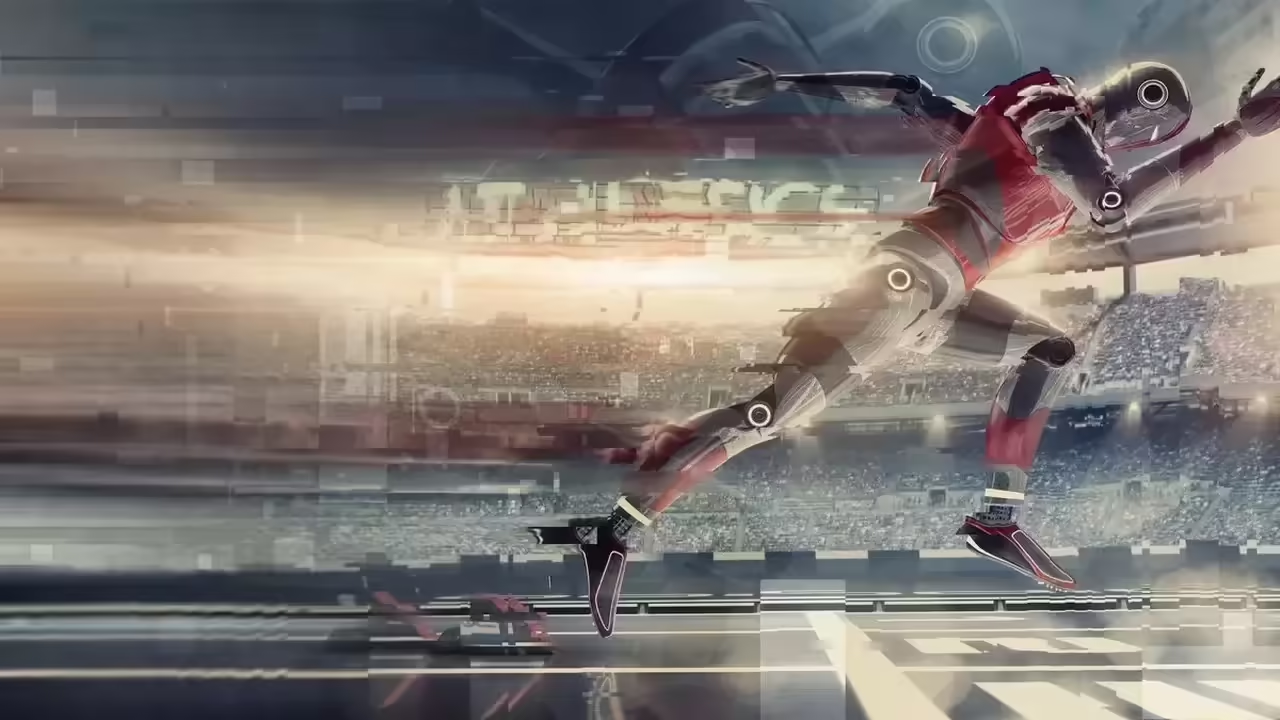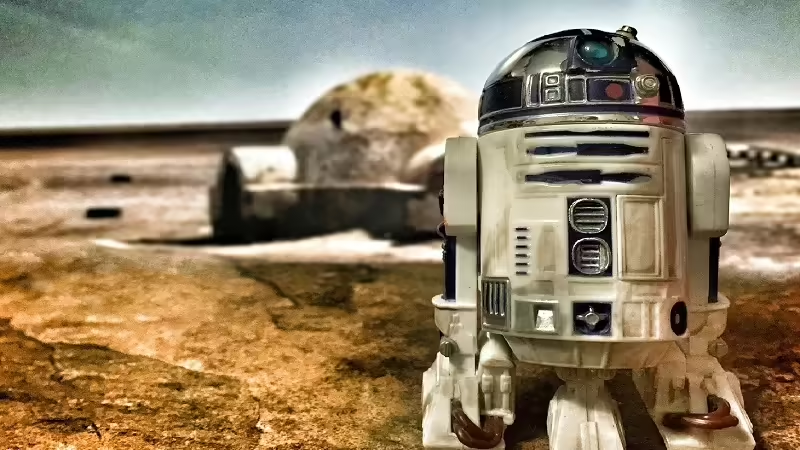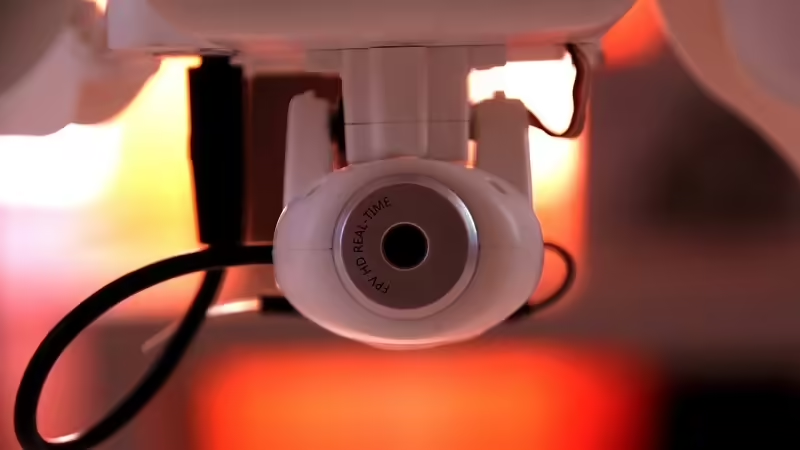
In the exciting and dynamic world of robotics, innovation is a constant. Every advancement, no matter how small, expands the horizons of what is possible and promises a future where robots play increasingly important roles in our daily lives. In this context, a new protagonist emerges: the Fastest Robot.
This robot, whose development has been meticulously conceived by an interdisciplinary team of engineers and scientists, stands out for its exceptional ability to move at breakneck speeds without compromising its precision or safety. Equipped with cutting-edge technology in locomotion, sensors, and data processing, this innovative device embodies the pinnacle of robotic engineering and artificial intelligence.
What makes it so exceptional? Firstly, its speed. This robot is capable of moving at speeds that far exceed human capabilities. Its aerodynamic design and advanced propulsion system allow it to achieve unprecedented agility, making it an ideal candidate for a wide range of applications, from warehouse logistics to search and rescue operations in emergency situations.
But speed is not its only strength. This robot also stands out for its ability to react and adapt in real-time. Thanks to a combination of machine learning algorithms and sophisticated sensors, it can navigate obstacles quickly and efficiently, adjusting its trajectory on the fly to avoid collisions and maximize its effectiveness in dynamic and complex environments.
The relevance of this Fastest Robot in the field of robotics and technology is undeniable. Its ability to surpass traditional limits of speed and agility opens new possibilities in diverse fields such as industrial automation, space exploration, and healthcare assistance. Furthermore, its potential to enhance efficiency and safety in a variety of contexts makes it an invaluable tool in the quest for innovative solutions to real-world challenges.
However, its introduction also raises important ethical and social questions. How will the proliferation of ultra-fast robots affect the human workforce? What are the implications of their use in terms of privacy and security? These are questions that must be addressed proactively to ensure that the integration of this revolutionary technology is carried out ethically and responsibly.
Development of the Fastest Robot: A Quantum Leap in Modern Robotics
The origin of the Fastest Robot dates back to decades of research and development in the fields of robotics and artificial intelligence. Its conception is based on a combination of technological advances in key areas such as mechanics, electronics, computing, and artificial intelligence.
The design and development process of this robot began with the identification of a clear need in the field of robotics: the demand for robots capable of moving with unprecedented speed and agility, without compromising safety or precision. With this goal in mind, teams of engineers, scientists, and robotics experts joined forces to explore innovative solutions to achieve this ambitious objective.
A fundamental part of the development of the Fastest Robot was the design of its structure and locomotion mechanisms. Drawing inspiration from the biomechanics of fast animals such as cheetahs and birds, engineers created an aerodynamic and lightweight design that maximizes efficiency in high-speed movement. High-strength composite materials and advanced engineering allowed the robot’s weight to be reduced without sacrificing its robustness and durability.
Another crucial aspect of the development was the implementation of innovative propulsion systems. High-power electric motors and hydraulic actuators were combined with precise control systems to enable rapid acceleration and agile movement in all directions. At the same time, sophisticated control algorithms were designed to optimize energy efficiency and stability of the robot during high-speed movement.
Sensor technology also played a fundamental role in the development of the Fastest Robot. A variety of sensors, including high-resolution cameras, LIDAR, and proximity detection systems, provide the robot with detailed perception of its environment, allowing it to detect and avoid obstacles with millimeter precision even at extremely high speeds. This data is processed in real-time through powerful data processing systems, which use advanced computer vision algorithms and machine learning to make quick and adaptive decisions.
Design and Technology of the Fastest Robot: Engineering for Extreme Speed
The design and technology behind the Fastest Robot focus on optimizing every aspect to achieve unprecedented maximum speed, while maintaining stability, safety, and precision. From its mechanical structure to its propulsion and control systems, each element has been carefully conceived to achieve exceptional performance in movement.
Mechanical Structure: The structure of the Fastest Robot is characterized by its aerodynamic design and lightweight yet sturdy construction. High-tech composite materials have been used to provide the ideal combination of strength and reduced weight. This construction allows the robot to move with agility and efficiency, minimizing air resistance and maximizing its speed.
Propulsion Systems: The propulsion systems of the Fastest Robot are a key component in its ability to achieve extreme speeds. High-power electric motors are used to provide rapid acceleration and precise motion control. Additionally, hydraulic actuators have been integrated to allow the robot to perform agile maneuvers and changes of direction without sacrificing stability.
Advanced Control: The control of the Fastest Robot is another crucial element for its exceptional performance. Sophisticated control algorithms have been developed to optimize energy efficiency and stability of the robot during high-speed movement. These algorithms allow the robot to quickly adapt to changes in its environment and make real-time decisions to avoid obstacles and maintain a safe trajectory.
High-Precision Sensors: To ensure the safety and precision of the Fastest Robot, a variety of high-precision sensors have been incorporated. These include high-resolution cameras, LIDAR (laser detection and ranging), and proximity detection systems. These sensors provide the robot with detailed perception of its environment, allowing it to detect obstacles and adjust its trajectory with millimeter precision even at high speeds.
Real-Time Data Processing: The data collected by the sensors is processed in real-time through powerful data processing systems. These systems use advanced computer vision algorithms and machine learning to quickly interpret information about the environment and make informed decisions about the robot’s movement.
Practical Applications of the Fastest Robot: A Swift Ally in Various Scenarios
The Fastest Robot not only represents an impressive technological achievement, but also offers a wide range of practical applications in a variety of fields. Its exceptional speed, combined with its adaptability and precision, makes it an invaluable ally in scenarios where speed and efficiency are crucial. Below, we explore some of the most promising applications of the Fastest Robot:
Manufacturing Industry: In the field of manufacturing, speed and precision are critical factors for operational efficiency. The Fastest Robot can play a fundamental role in automating assembly and material handling tasks, where its ability to move quickly between workstations and perform precise movements can significantly increase production and reduce downtime.
Logistics and Storage: In warehouses and distribution centers, speed in picking and precision in organizing products are essential to maintain operational efficiency. The Fastest Robot can be employed for picking and sorting products with unmatched speed and precision, optimizing logistics processes and reducing costs associated with downtime and human errors.
Space Exploration: In extreme environments such as space, where communications are limited and resources are scarce, autonomy and speed are crucial for the success of exploration missions. The Fastest Robot can be used for planetary surface exploration and data collection in hostile environments, where its ability to move quickly and adapt to difficult terrain can help scientists gather valuable information about the cosmos.
Emergency Rescue: In emergency situations such as natural disasters or industrial accidents, every second counts in the search and rescue of victims. The Fastest Robot can be deployed in these scenarios to explore dangerous and hard-to-reach areas at exceptional speeds, allowing rescue teams to identify and rescue trapped individuals more quickly and safely.
Emergency Medical Services: In emergency medical environments, the speed of response and treatment can make the difference between life and death. The Fastest Robot can be used to deliver critical medical supplies to remote or hard-to-reach areas at unprecedented speeds, providing vital assistance to patients in emergency situations.
Future and Perspectives of Fast Robots: Advancing towards a World of Speed and Efficiency
The future of fast robot development promises to be exciting and full of possibilities, with technological innovations that could further transform our lives and the way we interact with technology. Here are some speculations on what we might see in the coming years:
Improvements in Speed and Agility: While the Fastest Robot has already achieved impressive speeds, we are likely to see even more significant advances in terms of speed and agility. Component miniaturization and the development of new materials could allow for the creation of even faster and more agile robots capable of overcoming obstacles and performing tasks with unprecedented efficiency.
Integration of Advanced Artificial Intelligence: Artificial intelligence will play an increasingly important role in the future development of fast robots. Advances in machine learning algorithms and computer vision are expected to enable robots not only to move faster but also to make smarter and more adaptive decisions in real-time, improving their ability to interact safely and efficiently with their environment.
Applications in Extreme Environments: Fast robots could play a crucial role in a variety of extreme environments where speed and efficiency are essential. From exploring uncharted regions of the Earth, such as dense jungles or mountainous terrain, to performing tasks in hazardous environments such as disaster zones or extraterrestrial spaces, fast robots could be deployed to perform tasks that were previously difficult or impossible for humans.
Robotic and Human Collaboration: As fast robots become more advanced and sophisticated, we are likely to see increased integration of collaboration between humans and robots in a variety of fields. Fast robots could work alongside humans in manufacturing, logistics, and healthcare settings, leveraging the speed and precision of robots to improve efficiency and safety in the workplace.
Advancements in Autonomous Robotics: Autonomy will be another key aspect of the future development of fast robots. Advances in environment perception, route planning, and autonomous control are expected to enable fast robots to perform tasks completely autonomously, without the need for human supervision. This will open up new opportunities in fields such as autonomous package delivery, underwater exploration, and surveillance of large areas.







